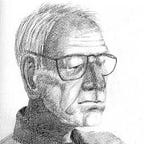Prague — Horizon Grand Prix 2019
The last time I visited Prague was in the midst of the Cold War days. Now in 2019, the world famous astronomical clock in the town square was still ticking after 609 years. The Cold War ended thirty years ago and hordes of tourists were taking selfies of themselves with long sticks as statues of the Apostles went around on the hour. Prague was the site of a peaceful international hydrogen-gas powered model car racing championship for high schoolers and middle schoolers.
Nine countries had sent fifteen teams to Prague for the Horizon Grand Prix, the hydrogen-gas powered race in an attempt to raise the awareness of teenagers to an alternative to fossil fuels. A promotional brochure cited: “Today, there are something like a billion cars — roughly one for every seven people on the planet. Think of Earth as a giant gas station with only a limited supply of fuel and you’ll realize quite quickly that we have a problem. Many geologists think we’re reaching a point they call ‘peak oil’ and, in the next few decades, supplies of gasoline (and everything else made from petroleum) will start to dwindle . . . The solution may be to switch vehicles over from gasoline and diesel engines to electric fuel cells, which are a bit like batteries powered by hydrogen gas that never run flat. Silent, pollution free, they’re among the cleanest and greenest power source yet developed.” Hydrogen is the most abundant element in the universe. It makes up about 90 percent of the universe and 10 percent of the Earth’s crust. NASA first used hydrogen in fuel cells on the Space Shuttle to provide electrical energy and drinking water for the astronauts.
The race venue was in a basketball-sized court adjoining a science pavilion. It was a grueling six-hour radio-controlled model car race with numerous pit stops, car crashes, and cheering parents. The objective of the race was to complete as many laps of the intricate race course as possible within a six-hour time limit. The top five winners were from the USA and the State of California. The remaining field, in order of their standing, were posted on the leader board throughout the race. The overall winner, Steam Legacy, completed 1330 laps. My grandson, one of two drivers competing for the Oakwood 3 School team from Los Angeles, completed 1192 laps and came in 5th place. The two drivers alternated every hour and a half for the six-hour race duration.
The drivers, the most visible contestants during the race because of their balcony overview of the entire race course, deserve a big hand for their stamina and concentration every moment and every lap during the six-hour race. Also deserving credit, were the pit crew exchanging hydrogen tanks, Lithium batteries, and repairs from minor bumps and scrapes to major crashes. The coach deserves credit for behind-the-scene and hands off guidance and moral booster. The parents of the children also deserve credit for backing their children, teams, and schools.
I captured a one-minute video of the six-hour grueling race and posted it on YouTube.
Following the race, we went to visit the famous Jewish Cemetery. Unfortunately, it was closed for the holidays. I resurrected an old black-and-white snapshot from 1966 on my first trip to Prague. It was before my son and grandson (one of the drivers) were born. Time really does fly!
